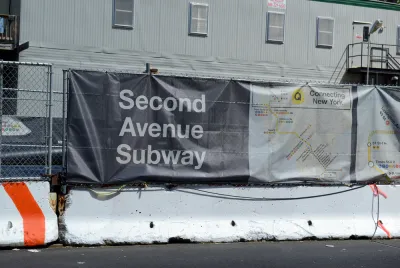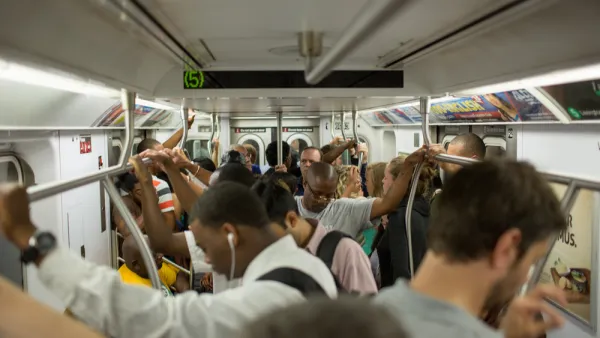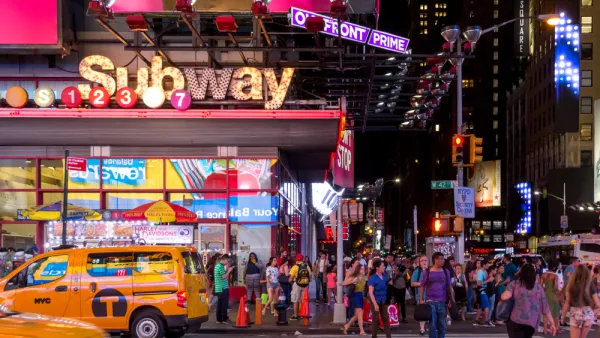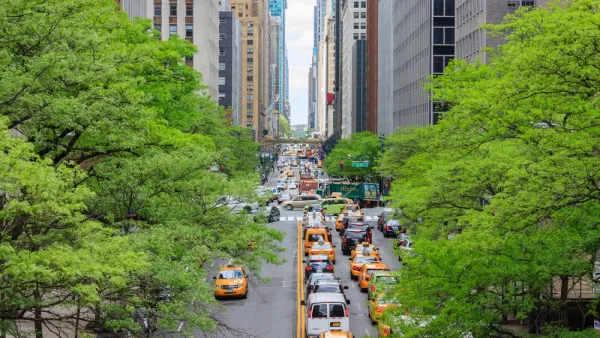Value capture, collecting tax increment from subway adjacent properties to help provide money needed to repair the 114-year old subway system, is proposed by New York Gov. Andrew Cuomo and opposed by the New York City Mayor Bill de Blasio.

"The notion that property owners should pay extra for their proximity to the subway is called 'value capture' and has long been debated in urban planning circles," writes James Barron for The New York Times on Jan. 29.
In one of many recent New York Times feature articles (posted here Jan. 12) on the subway's woes, Jonathan Mahler noted that the world's most successful subway, the MTR in Hong Kong, derives much of its revenue from its transit-adjacent property holdings. A Brooklyn real estate developer cited in the piece was quick to recognize the importance of subway access.
“Developers build things where the subway works, and we build far fewer things where it doesn’t,” said Jed Walentas.
In his words, it’s “insane” that so little of the wealth that the subway generates flows back into the system.
"Now Gov. Andrew M. Cuomo, a Democrat, has made value capture a prominent part of his plan to salvage the subway system by proposing to give the Metropolitan Transportation Authority the power to designate 'transit improvement subdistricts' and impose taxes," adds Barron. And there's the mayor's office to consider:
"It’s not going to pay in its entirety for the capital requirements for any one project,” said Patrick J. Foye, the president of the transit authority, “but it could over years or decades provide significant new funding.”
At least two groups have announced their support for the use of value capture to fund subway improvements.
Value capture is “the solution of the moment,” said Kathryn S. Wylde, the president and chief executive of the Partnership for New York City, an influential group of business leaders.
And Thomas K. Wright, the president of the Regional Plan Association, an urban policy organization, called value capture an “innovative financing mechanism” that New York is missing out on, even as the subway “is making some people very, very wealthy.
Two NYU economics professors endorsed the concept in November, citing specific values subway proximity adds to midtown properties.
While the aforementioned Brooklyn developer spoke in favor of value capture, a spokesman for "the Real Estate Board of New York, which represents New York’s developers, said the proposal 'raises serious questions that need to be evaluated, especially when it deals with a property tax system that we know already has serious problems,'” adds Barron.
Carl Weisbrod, who was named to the transit agency’s board by Mr. de Blasio and was the chairman of the city’s Planning Commission from 2014 until early last year, said value capture demanded “close cooperation between the M.T.A. and the city on a case-by-case basis.”
“To simply impose it on the city isn’t going to work,” he said.
Value capture was also mentioned as a financing mechanism included in the leaked draft of the Trump infrastructure plan last week.
Lots of good reading in Planetizen on the importance of value capture in terms of funding public transit, among them:
- Mega Project in Suburban Atlanta Gets Final Public Financing Piece: Value Capture, January 25, 2017
-
Op-Ed Supports Value Capture-Enabled Transit Investment (by Los Angeles Metro), May 31, 2016
FULL STORY: The Subway Is Next Door. Should New Yorkers Pay Extra for That?

National Parks Layoffs Will Cause Communities to Lose Billions
Thousands of essential park workers were laid off this week, just before the busy spring break season.

Retro-silient?: America’s First “Eco-burb,” The Woodlands Turns 50
A master-planned community north of Houston offers lessons on green infrastructure and resilient design, but falls short of its founder’s lofty affordability and walkability goals.

Delivering for America Plan Will Downgrade Mail Service in at Least 49.5 Percent of Zip Codes
Republican and Democrat lawmakers criticize the plan for its disproportionate negative impact on rural communities.

Test News Post 1
This is a summary

Test News Headline 46
Test for the image on the front page.

Balancing Bombs and Butterflies: How the National Guard Protects a Rare Species
The National Guard at Fort Indiantown Gap uses GIS technology and land management strategies to balance military training with conservation efforts, ensuring the survival of the rare eastern regal fritillary butterfly.
Urban Design for Planners 1: Software Tools
This six-course series explores essential urban design concepts using open source software and equips planners with the tools they need to participate fully in the urban design process.
Planning for Universal Design
Learn the tools for implementing Universal Design in planning regulations.
EMC Planning Group, Inc.
Planetizen
Planetizen
Mpact (formerly Rail~Volution)
Great Falls Development Authority, Inc.
HUDs Office of Policy Development and Research
NYU Wagner Graduate School of Public Service





























